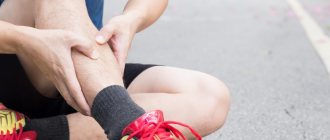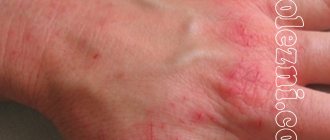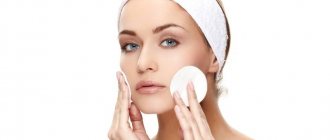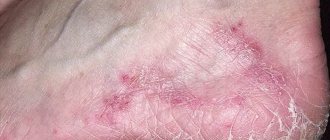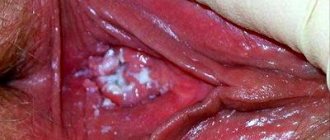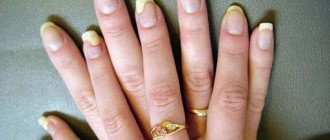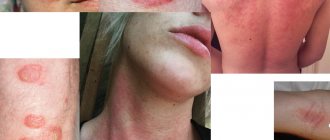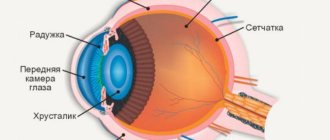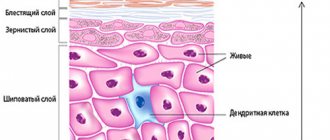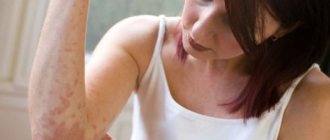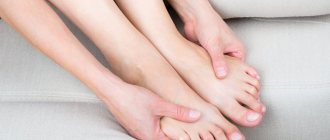Human skin is not just a tissue that covers the entire outside of the body. This is a huge organ that protects us from external influences: microorganisms, pressure, temperatures, chemicals. In addition, the skin is closely connected with our internal environment, and when any problems appear there, it makes them known by a general or local change in structure, elasticity and color. Thus, red spots on the legs, as well as a rash of a different nature in this location, are a signal that problems are happening to the body. In order to avoid hazardous health consequences, they must be identified and eliminated. Let's look at what the rash looks like for the most common diseases.
Pathological causes
Spots on the legs can appear for many reasons. By its appearance and accompanying symptoms, you can understand what caused the rash and how to treat it. Often the causes of the appearance of red dots are various diseases.
Allergy
Allergies are one of the most common causes of spots on the legs and entire body. She may be:
- Food. This allergic reaction is associated with the consumption of allergenic foods. This could be nuts, honey, citrus fruits, dairy products, sweets, etc.
- Medication. An allergy to medications can be caused by the body's hypersensitivity to individual components of the drug, as well as by improper use or overdose. Most often, unpleasant symptoms, including the appearance of red spots on the legs, are associated with taking antibiotics, but other types of medications can also provoke a negative reaction.
- Contact. An allergic reaction is triggered by contact with an allergenic substance. These include cosmetics, unsuitable hygiene products, and contact with plant juice or pollen on the surface of the skin.
The most common types of allergies that cause red spots on the legs are atopic and contact dermatitis.
Eczema
Eczema is a skin disease in which red spots of varying sizes appear on the skin of the legs or other parts of the body. They are often dry, itchy, covered with a crust that flakes off. But sometimes ulcerations appear on the surface of the rash. In this case, the disease is called weeping eczema.
The disease can develop against the background of frequent allergic reactions, as well as numerous pathologies of internal organs. The risk group includes diabetics, patients with weak immunity and HIV infection.
Psoriasis
Psoriasis develops when the body begins to actively produce skin cells, as a result of which there are more of them than necessary. The development of the disease can be the result of severe stress, injury, infectious diseases, taking certain types of medications, or bad habits.
Psoriasis is an immune disease, the development of which is difficult to predict and prevent. Moreover, it cannot be completely cured - you can only relieve the symptoms and put the pathology into remission.
Folliculitis
Inflammation of the hair follicles is most often observed on the lower extremities.
The disease affects mainly women, although it can also develop in men (in this case, not only on the legs). The main cause of folliculitis is mechanical damage to the skin. For example, while shaving.
Fungal infection
The fungus most often affects the toes, but can also develop on the feet and legs. The disease is very contagious and is easily transmitted through personal contact. Also, mycosis of the skin of the legs can develop after undergoing a course of treatment with powerful antibacterial drugs.
Fungus of the lower extremities is a common occurrence in people with excessive sweating of the feet. Wearing underwear made from synthetic materials can also cause this disease. The skin becomes irritated under the influence of unnatural components, microcracks can form on it, through which fungi can penetrate into its thickness.
Lichen
Lichen planus is another cause of spots on the legs. The disease is not transmitted by contact, so it is not dangerous to others. According to experts, the development of LP is associated with genetic conditioning. The pathology is accompanied by severe itching, peeling, and burning. At the same time, it is accompanied by psychological discomfort that the patient experiences during the next attack of unpleasant symptoms.
This type of lichen can be determined at home. To do this, the red plaque must be lubricated with any vegetable oil and wait for the result. It won't take long to notice: white dots and/or lines will appear on the surface of the rash.
It is impossible to completely cure this pathology. But if you seek help from a doctor and undergo a course of symptomatic therapy, the disease may not bother the patient for a long time.
Blood vessel diseases
Red spots on the legs that itch and cause discomfort can appear not only due to the development of skin pathologies. Many disorders of the internal organs can also lead to the formation of such a rash. In particular, these may be diseases of the blood vessels:
- thrombosis;
- vasculitis;
- phlebeurysm;
- venous hyperemia.
With the above pathologies, spider veins or large red spots may appear on the surface of the skin. As the disease progresses, the skin rashes on your legs will begin to itch.
The appearance of itching is a very alarming symptom that you should not turn a blind eye to. He speaks of a serious circulatory disorder and the development of complications of the disease.
Erysipelas
Erysipelas, or erysipelas, is an infectious skin disease caused by streptococci. With this pathology, a spot forms on the leg - large or small - with an intense, bright red tint. It itches a lot and causes discomfort – physical and psychological.
Erysipelas is accompanied by other symptoms, the most common of which are hyperthermia and general malaise. An existing spot can grow over time, covering healthy areas of the skin. Along with the defect, discomfort also grows.
The cause of streptococcal infection can be injury: a scratch, wound, microcrack, cut. In some cases, even a violation of the integrity of the skin under the nail plate on the toe can contribute to the development of erysipelas of the skin.
Allergy to the sun
Allergy to the sun is one of the types of dermatitis - photodermatitis (or photodermatosis). In this case, red spots appear on the legs, as well as on other parts of the body, including the face. They are very itchy, painful and cause physical and psychological discomfort.
Symptoms of photodermatitis can develop immediately or after some time after exposure to the sun. The process of disease development takes from several hours to 1-2 weeks. The cause of unpleasant symptoms may be:
- some types of medications (hormones, antibiotics, NSAIDs, etc.);
- Food;
- cosmetics (creams, perfumes, etc.).
There are categories of the above mentioned products that increase the body's photosensitivity. Therefore, you should avoid using or consuming them before going out into the sun.
Diabetes
The formation of red spots on the skin of the lower extremities is a common occurrence in diabetes mellitus. The spots are itchy and may also be weeping. Due to poor circulation in the legs, spotted growths may have a red-violet hue. In some patients they are accompanied by pain.
Severe itching forces the patient to frequently scratch the rash. This leads to injuries, wounds and ulcers. These lesions can then become infected by a bacterial or fungal infection, significantly worsening diabetes.
Liver and kidney diseases
With liver and kidney diseases, toxins accumulate in the body. They are not completely eliminated from it, but circulate in the blood and enter the internal organs. The skin is one of the first to suffer from such disorders. Red dots form on it, which can be located on any part of the body, including the lower limbs. The spots are very itchy and may peel off. At the same time, depending on the affected organ (liver or kidneys), other unpleasant symptoms of the pathological process appear.
Scabies
Scabies is a parasitic skin disease caused by the scabies mite. It has the ability to penetrate into the thickness of the skin, leaving behind a barely noticeable furrow. If indeed the cause of itching on the legs lies in this disease, then the red spots will look like small, numerous dots. After scratching, they may turn white and pink.
Helminthiasis
Helminths are parasites whose waste products cause increased sensitization in the human body. The consequence of this is a small spotty rash on the body or in certain areas, for example, on the legs.
Hemorrhagic spots
Pigment spots - due to the fact that they are brown - are similar to hemorrhages that occur with vascular diseases, with pathology of the coagulation system:
- Thrombocytopenic purpura. Here the rash is not only located on the legs, it occurs spontaneously, after sleep, it is asymmetrical, both dark spots and purple and yellowish-green spots are visible (like the phases of a bruise).
- Hemorrhagic vasculitis. Here, brown spots appear immediately on the legs, symmetrically on both. The shape of the rashes is different, they tend to merge. The disease also affects the joints, the stomach may hurt, and the functioning of the kidneys and brain may be impaired. This pathology requires urgent medical correction. Read more about the symptoms and treatment of vasculitis.
Non-pathological causes of red spots on legs
Often, the appearance of red dots on the skin of the lower extremities is not associated with exposure to pathological factors. The formation of such a rash is possible when the human body is exposed to external irritants, which are quite easy to eliminate.
Prickly heat
Heat rash on the legs is caused by overheating and excessive sweating associated with poor hygiene. But it can also be a consequence of hyperhidrosis as one of the symptoms of various diseases. Most often, the rashes are localized in the area of the popliteal skin folds. The rash causes discomfort and may be painful or accompanied by a burning sensation.
Reaction to cosmetics and hygiene products
Not all cosmetic and hygiene products for body skin care are suitable for every person. In addition, some manufacturers use high-quality ingredients to make such products, and replace them with cheap chemical analogues - flavors, dyes and other elements.
Nervous disorders, stress
Itchy red spots on the skin of the legs appear in people who are in a state of chronic stress, or are often exposed to severe nervous and emotional shocks. Typically, such rashes do not require specific treatment, since they go away on their own after normalization of the nervous system.
Sudden temperature changes
When temperature changes, blood vessels sharply narrow and dilate. Due to the fact that they do not have time to adapt to new conditions, redness and itching occurs in the lower extremities, arms, torso or face. Some patients call this condition “cold allergy,” but this is not entirely true. In fact, unpleasant symptoms can occur both when entering a warm room from a frost, and when leaving into the sun from a cold room.
Other causes of redness on the legs
Red dots and spots on the legs that itch and cause discomfort may also appear for other reasons not related to disease. These include:
- insect bites;
- depilation;
- frequent sugaring, peeling, scrubbing the skin of the legs;
- burns;
- bruises and abrasions;
- frostbite;
- weathering;
- frostbite.
Also, itchy red spots on the legs can be the result of a banal neglect of hygiene rules. In this case, you can avoid their appearance by taking a shower regularly. In summer, you need to wash your feet from dust and sweat at least 4-5 times a day.
Nail diseases
The nail is another place where color abnormalities can form. White spots on toenails are associated with a disruption of the keratinization process in the plate, between the layers of which air accumulates. Tiny bubbles form unpainted areas. Thus, white spots on the nails of the toes and fingers will no longer allow you to paint them with transparent varnish. Treatment is aimed at restoring the full development and keratinization of the nail plates. To do this, take vitamins E, A, C and the minerals calcium and zinc. When enough useful microelements enter the body, the spot on the big toe nail will grow and be cut off, and the subsequent plate will form healthy.
Yellow spots on the nails may mean that fungus has formed in the layers of the plate. If a change in color is observed within a week, and not all nails, but some, are susceptible to it, then antifungal agents are prescribed: Mikozan, Lotseryl, Demicten.
Treatment with such varnishes eliminates the root cause and protects the damaged plate from other dangers until its cover is restored. Brown spots on the nails, if they are not caused by injury, are also a manifestation of fungus and are treated in the same way as yellow spots.
Any spot on a person's body, be it red, yellow, brown or dark, can cause concern. You can relieve anxiety by learning its meaning and methods of treatment in case of illness. A doctor and advice from the article will help with this.
Associated symptoms
Red spots on the legs rarely occur in isolation from other symptoms. In most cases they are accompanied by:
- itching;
- swelling;
- pain;
- peeling;
- redness of the skin around the spot;
- an increase in local temperature;
- crust formation;
- the appearance of wet areas.
In fact, these are the safest accompanying symptoms that may indicate the presence of inflammatory, allergic, and infectious skin lesions. But there are also clinical manifestations that require immediate consultation with a doctor, since they indicate the presence of pathologies of internal organs. So, you need to make an appointment with a doctor if:
- severe weakness;
- hyperthermia;
- extreme thirst;
- dry mouth;
- headaches;
- nausea;
- the formation of bubbles or vesicles at the location of the red spots;
- the appearance of ulcers in the area of red dots;
- yellowing of the skin;
- darkening of urine;
- lower back pain;
- bitterness in the mouth;
- urinary disorders, etc.
The above symptoms are observed in liver, kidney, and endocrine disorders. They cannot be delayed in treatment, so their combination with red spotty rashes on the legs should be a good reason for immediately seeking medical help.
Autoimmune diseases
The most common representatives of this class are:
- Psoriasis. This pathological condition is characterized by a white spot with a red dot in the center. The main reason for its formation is considered to be disruption of the functioning of the endocrine system.
- Lupus erythematosus. This condition is characterized by a red rim on the skin, it is somewhat thickened, and scales appear on the surface of the skin. The elements of the rash are thickened and localized on the skin of the face. To eliminate the symptoms of this disease, comprehensive treatment should be carried out under the supervision of a physician.
Diagnostics
If itchy red spots appear on your legs, you should consult a dermatologist. Before visiting a specialist, you do not need to smear the rash with brilliant green or iodine, as this may complicate diagnosis.
To begin with, an initial survey of the patient is carried out, during which he talks about when the spots began to appear, what preceded this and what accompanying symptoms they are accompanied by. Next, dermatoscopy is performed - examination of the affected areas of the skin using a special medical instrument - a dermatoscope.
If necessary, a tissue sample is taken from the surface of the rash for further microscopic examination. It allows you to determine the type of causative agent of a dermatological disease. Based on the results of such a test, the doctor can prescribe the most effective treatment.
If the red spots on the legs are not related to skin pathologies, the patient may be referred to other specialists:
- allergist;
- neurologist;
- endocrinologist;
- hematologist;
- cardiologist;
- oncologist.
Only on the basis of a comprehensive diagnosis will the doctor be able to prescribe correct and effective treatment.
Treatment
Treatment for red spots on the legs depends entirely on the cause of their appearance. In most cases, local medications are used, but sometimes systemic medications are necessary.
Effective for itchy spots on the legs:
- Antihistamines. They are prescribed for allergic spots on the skin of the lower extremities. Taken orally 1-2 times a day (depending on the generation and the specific drug). Tablets Fenkarol, Levocetirizine, Cetrin, etc. have good effectiveness.
- Antifungal ointments. Used for skin mycoses and lichen. Apply to the previously cleaned and dried affected area. Clotrimazole, Nystatin, Exoderil can be used.
- Hormonal ointments. For psoriasis, eczema, and severe skin allergies, ointments and creams based on hormonal components are used. These are Hydrocortisone, Dexamethasone, Kremgen. It is undesirable to use them without a doctor’s prescription, since they can cause severe side effects, including skin atrophy.
- Hyposensitizing agents and local antiallergic drugs. Fenistil, Boro-Plus, Bepanten or regular baby creams with chamomile or calendula will help eliminate redness, irritation, and itching on the skin of the feet. It is advisable to use them for hyperemic spots that appear under the influence of external irritating factors - after depilation, insect bites, use of low-quality body cosmetics, etc.
- Antiparasitic ointments. Used to treat scabies. Sulfur and iodine ointments, drugs Spregal, and Permethrin ointment are excellent in destroying scabies mites.
For helminthiasis, antihelminthic drugs are prescribed. They are selected after stool analysis, since it is important to determine the type of helminths. Based on the results obtained, you can select the most effective anthelmintic agent.
Folk remedies
Along with medications, for red spots on the legs that itch and cause discomfort, it is useful to use traditional medicine recipes. They will be effective for skin irritation, allergies, insect vinegar, frostbite.
Popular folk remedies:
- Herbal decoctions and infusions. In particular, medications based on chamomile, marigold, eucalyptus, and St. John's wort are good at eliminating itching and redness. You can make lotions and compresses, or simply wipe problem areas on your feet. But if the itching is unbearable, then it is recommended to freeze the broth and then wipe the spots with it. This approach will help eliminate discomfort.
- In case of fungal infection, it is recommended to use an infusion of celandine. At 8 tbsp. l. herbs you need to take 3 liters of boiling water and steam. Keep covered for 45 minutes, then strain and add to a bath of water or basin. Immerse your feet in the solution and keep it until it cools completely. The infusion can be used for compresses, but to do this you need to pour 1 spoon of the raw material into a glass of boiling water.
- Viburnum juice. It has antiseptic, anti-inflammatory, analgesic properties. Used to wipe away red spots resulting from allergies, fungus, and skin irritation.
If the red spots on the legs are flaky and occur due to excessive dryness of the skin, then rubbing coconut or olive oil into the epidermis in the morning and evening will help get rid of them. Carry out the procedure after taking a shower or bath.
Preventive measures in this case are simple. It is necessary to carefully monitor body hygiene, use only high-quality and suitable cosmetics, refuse to take medications on your own, and eat a healthy and balanced diet. It is also recommended to avoid contact with stray animals, but if this fails, after coming home you should wash your hands well and treat them with an antiseptic: this will prevent the infection from spreading to other parts of the body.
Prevention
Preventive measures should be aimed at maintaining general immunity and compliance with sanitary and hygienic standards. This will help increase the protective properties of the skin and resist infectious pathogens. Recommendations for prevention are as follows:
- daily hygiene;
- exclusion of contact with irritants;
- washing hands after public places;
- preventive intake of vitamins;
- balanced diet rich in vitamins;
- walks in the fresh air and good rest;
- to give up smoking;
- minimizing stress, taking care of the psycho-emotional state;
- use of clothes and towels made from natural fabrics.
